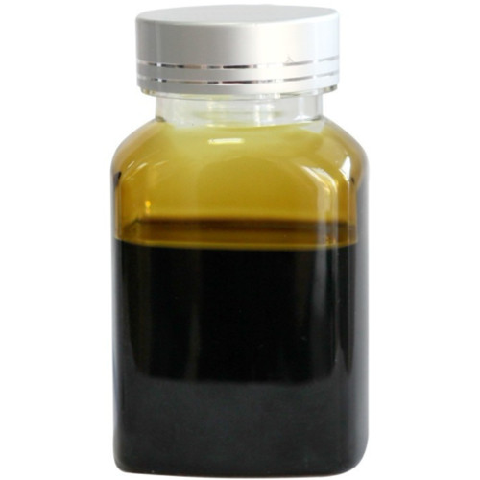- Home
- Products
- Elementary
- Boride Powder
- 3D Printing Powder
- Sulfide Powder
- Oxide Powder
- Carbide powder
- Nitride Powder
- Silicide Powder
- Hydride Powder
- Telluride Powder
- Selenide Powder
- Stearic Acid Series
- Phosphide Powder
- Nanoparticles
- Metal Alloy
- MAX Phase
- Lithium Battery Anode
- Surfactant
- Molecular sieves
- Concrete Admixtures
- News
- Answers
- Contact
- About
News
- 0
- 0
Which is better, graphene battery or lead-acid battery?
If you are looking for high-quality products, please feel free to contact us and send an inquiry, email: brad@ihpa.net
Koalas were declared endangered in eastern Australia on Friday, with more and more koalas dying from disease, habitat loss, and other threats. Earlier, the koala was considered a vulnerable species, and the Commonwealth Department of the Environment changed its protection level to endangered on the east coast of Queensland, New South Wales, and the Australian Capital Territory. Many koalas in Australia are infected with chlamydia. The disease can cause blindness, infection, and infertility. Last year, the Australian Koala Foundation said Australia had lost about 30 percent of its koala population in the past three years. Without immediate action, the species could become extinct by 2050.
Unlike koalas, which are on the brink of extinction, the market demand for graphene battery will grow substantially.
A lead-acid battery (VRLA) is a battery whose electrodes are mainly made of lead and oxides, and the electrolyte is a sulfuric acid solution. In the discharge state of the lead-acid battery, the main component of the positive electrode is lead dioxide. The main component of the negative electrode is lead; in the charged state, the main component of the positive and negative electrodes is lead sulfate.
Which is better, graphene battery or lead-acid battery?
To know whether it is better to use a graphene battery or a lead-acid battery, we need to compare the performance of the two so that we can understand the advantages and disadvantages of the two batteries. Next, we will discuss the advantages and disadvantages of graphene batteries and lead-acid batteries. Compare price, service life, safety, battery life, and charging time to find the best battery for our use.
Price comparison
We said earlier that graphene batteries are an enhanced version of lead-acid batteries. Compared with lead-acid batteries, its lead plate is thicker, and graphene technology is added, which will make the price of graphene higher than that of lead-acid batteries. The price of acid batteries is slightly higher, but the price gap between the two is getting smaller and smaller. At present, the price of graphene batteries is slightly higher than that of lead-acid batteries by 10~20%.
Service life comparison
Since the graphene battery is an enhanced version of the lead-acid battery, the weaknesses of the lead-acid battery will be strengthened. The service life of the lead-acid battery is generally about 300 times of charge and discharge, while the number of times of charge and discharge of the graphene battery reaches about 500 times, which is much more used than the lead-acid battery. Of course, this is also related to the car owner's maintenance method and usage habits, but in theory, the life of the graphene battery is longer than that of the lead-acid battery.

Safety comparison
The production process and materials used for graphene and lead-acid batteries are the same. Graphene batteries only increase the thickness of the front plate and add graphene elements with better conductivity, so the comparison between the two in terms of safety. It is not apparent, and it can be said that the security performance of the two is the same.
Comparison of cruising range
Compared with the new lead-acid battery and the graphene battery, the cruising range of the two is similar. Still, as the use time increases, the graphene battery has a thicker lead plate, so its attenuation degree is smaller than that of the lead-acid battery. For example, if the battery is switched after one year, it only has 50~60% of the original capacity, while the graphene battery can reach 90% of the original capacity. With the prolongation of use time, the contrast will become more apparent.
Comparison of charging time
Since the graphene battery is added with a more conductive graphene element, and the graphene battery is also equipped with a special charger, the graphene battery can be charged faster, and it can be fully charged in about 5 hours, while our ordinary lead-acid battery It takes about 8 hours or so to fill up.
Although graphene batteries are just an enhanced version of lead-acid batteries and do not use accurate graphene technology, graphene batteries are superior to ordinary lead-acid batteries in terms of service life, mileage, and charging time, especially with The price gap between graphene batteries and lead-acid batteries is getting smaller and smaller. For car owners, it is pretty cost-effective to choose graphene batteries.
High-quality graphene battery manufacturer
Luoyang Moon & Star New Energy Technology Co., LTD, founded on October 17, 2008, is a high-tech enterprise committed to developing, producing, processing, selling, and technical services of lithium-ion battery anode materials. After more than ten years of development, the company has gradually developed into a diversified product structure with natural graphite, artificial graphite, composite graphite, intermediate phase and other harmful materials (silicon-carbon materials, etc.). The products are widely used in high-end lithium-ion digital power and energy storage batteries.
If you are looking for graphite or lithium battery anode material, click on the needed products and send us an inquiry:sales@graphite-corp.com.
The resurgence of the global COVID-19 pandemic and the impact of the Russia-Ukraine conflict continued to cause high volatility in commodity prices. Stubbornly high inflation and rising commodity prices are likely to influence each other and thus push each other higher. The price of the graphene battery may not decrease significantly in the short term.
Inquiry us